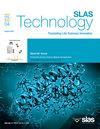用于抗癌药物注射给药方法的芯片上黑色素瘤模型。
IF 2.5
4区 医学
Q3 BIOCHEMICAL RESEARCH METHODS
引用次数: 0
摘要
制药和化妆品行业在采用新的研究模型进行产品开发时遇到了挑战。人们对片上器官系统,尤其是生成皮肤模型的兴趣与日俱增。虽然有许多复制高保真皮肤模型的替代品,但专门在这些微流控芯片上研究黑色素瘤的方法却明显缺乏。这项工作介绍了一种新颖的皮肤芯片装置,它具有两个微流室,便于成纤维细胞、角质细胞和黑色素瘤细胞的三维细胞共培养。这种芯片上器官的设计使人们能够利用芯片内的注射系统注射抗癌治疗药物吉西他滨。这项工作的结果表明,在注射吉西他滨后,细胞的共培养分布产生了显著影响,减少了癌细胞的数量。本文介绍的工作证明了芯片和给药方法在测试抗黑色素瘤疗法方面的有效性,并将这项技术定位为研究黑色素瘤的增强保真度模型,同时为药物测试的实时监测提供了一种替代方法。本文章由计算机程序翻译,如有差异,请以英文原文为准。
Melanoma-on-a-chip model for anticancer drug injecting delivery method
The pharmaceutical and cosmetic industries are encountering a challenge in adopting new study models for product development. there has been a growing interest in organ-on-a-chip systems, and particularly for generating skin models. While numerous alternatives replicating high-fidelity skin models exist, there is a notable absence of melanoma study's methodology specifically on these microfluidic chips. This work introduces a novel skin-on-a-chip device featuring two microfluidic chambers, facilitating a 3D cell co-culture involving fibroblasts, keratinocytes, and melanoma cells. The design of this organ-on-a-chip has enabled the administration of the anticancer treatment Gemcitabine using an injection system within the chip. The results of this work have shown a significant impact on the co-culture distribution of cells, decreasing the population of cancerous cells after the administration of Gemcitabine. The work presented in this article demonstrates the effectiveness of the chip and the administration method for testing anti-melanoma therapies and position this technology as an enhanced fidelity model for studying melanoma while providing an alternative for real-time monitoring of drug testing.
求助全文
通过发布文献求助,成功后即可免费获取论文全文。
去求助
来源期刊

SLAS Technology
Computer Science-Computer Science Applications
CiteScore
6.30
自引率
7.40%
发文量
47
审稿时长
106 days
期刊介绍:
SLAS Technology emphasizes scientific and technical advances that enable and improve life sciences research and development; drug-delivery; diagnostics; biomedical and molecular imaging; and personalized and precision medicine. This includes high-throughput and other laboratory automation technologies; micro/nanotechnologies; analytical, separation and quantitative techniques; synthetic chemistry and biology; informatics (data analysis, statistics, bio, genomic and chemoinformatics); and more.
 求助内容:
求助内容: 应助结果提醒方式:
应助结果提醒方式:


